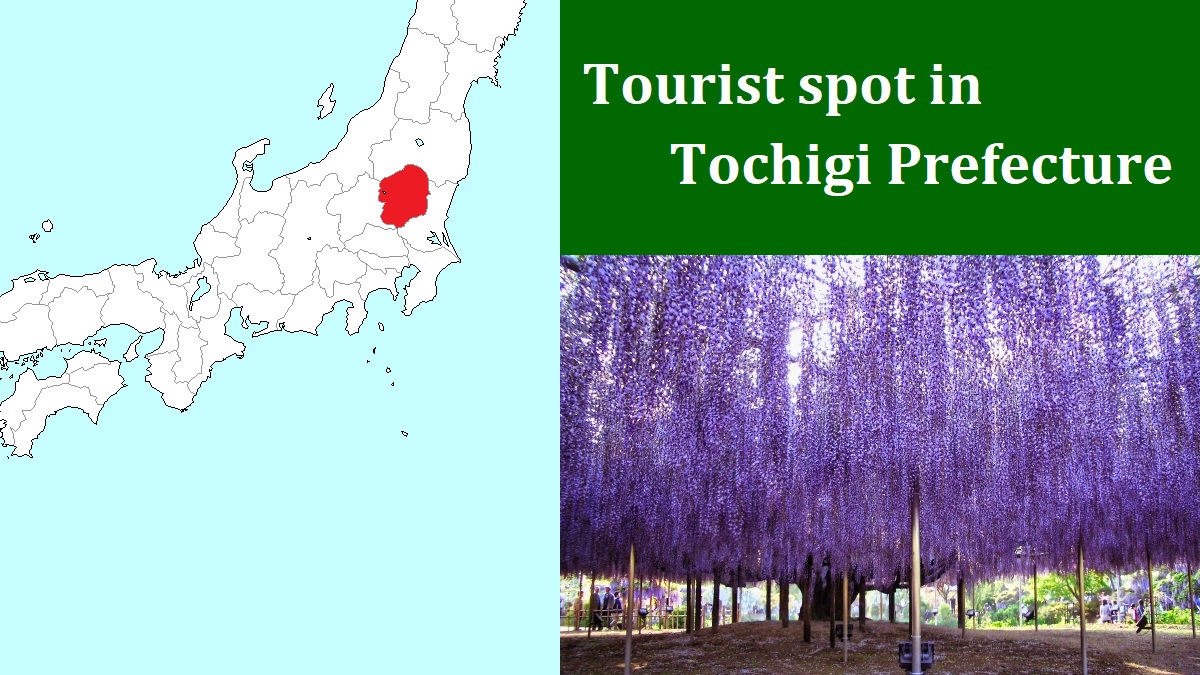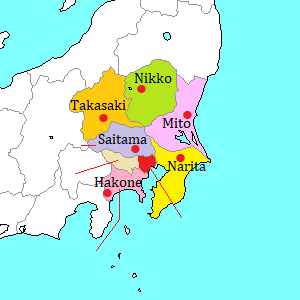Ashikaga [足利]
Ashikaga is the city located at the southwestern end of Tochigi Prefecture, and next area is in Gunma Prefecture.
It is located about 45 km southwest of Utsunomiya.
Since the 12th century, Ashikaga family had governed this area.
By that time, this area was already called "Ashikaga".
Ashikaga family overthrew the Kamakura government in the early 14th century.
Then, they founded Muromachi government in Kyoto.
Around the period, Ashikaga School was founded in this city.
And it had become the highest educational institution in east Japan until the 17th century.
There are a few historical spots associated with Ashikaga family in this city.
Ashikaga School (足利学校)
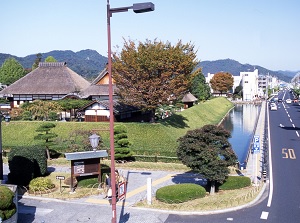
Ashikaga School
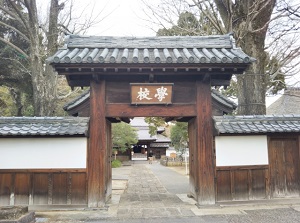
Main gate of Ashikaga School
Ashikaga School is the oldest school in Japan, and the site is located about 0.5 km northwest of JR Ashikaga station.
It is uncertain when the school was founded.
But, after its decline period, a lord of Ashikaga reconstructed in 1432.
Then it had become the highest educational institution in east Japan for a long time.
Confucianism, Chinese divination, tactics & strategy of war, medical science, etc. were taught in this school.
It is said that most students were young priests, and it had more than 3,000 students from all over the country at its peak.
In the 16th century, Francis Xavier, the first Christian missionary in Japan, introduced this school to Europe as "the largest and most famous academy in Japan".
But, since around the 17th century, other new learnings had advanced.
So this school had declined.
In 1872, this school was closed because the modern educational system was implemented.
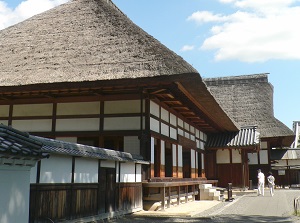
Schoolhouse in Ashikaga School
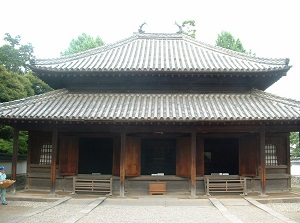
Temple of Confucius
In the site, there are some buildings.
The scenery of the site is nearly equal to the school at its peak.
Three gates and Temple of Confucius built in 1668 are the original constructions.
The other buildings were restored in 1990.
Ban-naji temple (鑁阿寺)
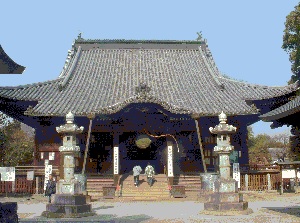
Main hall of Ban-naji
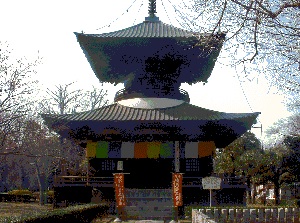
Two-storied pagoda of Ban-naji
Ban-naji is a Buddhist temple of Shingon sect which is one of the major Japanese Buddhism.
It is located just northwest of Ashikaga School.
It was built by Ashikaga Yoshikane, a lord in Ashikaga, in 1196.
He built the temple in his residence.
So, the site has earthworks and moats unlike normal Buddhist temple.
It traces back to a residence of samurai.
The main hall is a designated National Treasure in Japan.
And some buildings are designated as important cultural properties.
Kurita Museum (栗田美術館)

Kurita Museum
Kurita Museum is a private museum displaying only porcelains.
It is located about 6 km east of Ashikaga station.
It was founded by Kurita Hideo who had had a seat in Diet in 1968.
The collections of the museum were collected by him, and this museum houses about 10,000 articles.
It's notable that all articles are only Imari and Nabeshima porcelains.
It is one of the world's largest collections in the field.
In the wide site, there are many exhibition pavilions, Japanese gardens and some other buildings.
It is close to Ashikaga Flower Park station (the next station of Ashikaga) of JR Ryomo Line.
Ashikaga Flower Park (あしかがフラワーパーク)
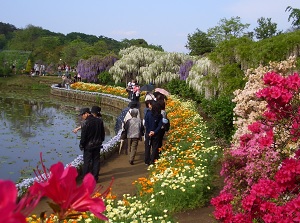
Ashikaga Flower Park
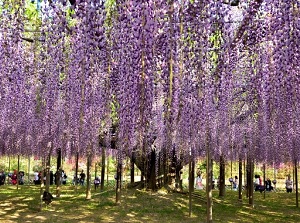
A big wisteria tree in Ashikaga Flower Park
It is a flower park located just south of Kurita Museum.
In the park, we can enjoy to see many beautiful flowers throughout the year.
But, the best plant to see here is the great Japanese wisteria trellis.
In 1996, four big wisteria trees about 140 years old were successfully transplanted here for the first time in Japan.
The countless blossoms cover about 517 square meters over our heads.
We can see them from late April to early May.
How to get here
By Tohoku-Shinkansen, about 43 minutes from Tokyo to Oyama.
Then by local train on JR Ryomo Line, about 42 to 49 minutes from Oyama.
The next station of Ashikaga is Ashikaga Flower Park station, and Ashikaga Flower Park and Kurita Museum is near the station.
Or, by limited express of Tobu Railway, about 1 hour and 10 minutes from Asakusa.

